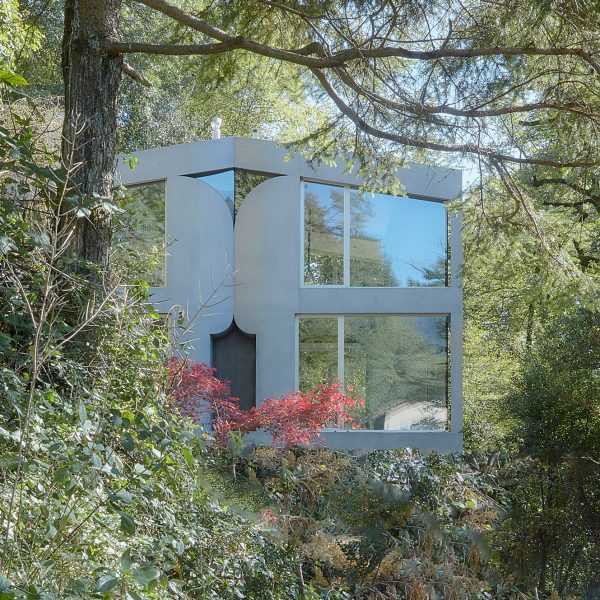Architecture studio Celoria Architects has completed House C, a concrete home in Mendrisio, Switzerland, informed by the region’s grotti– cellar-like communal spaces where local cuisine is served.
Designed for the studio’s founder, Aldo Celoria, the home’s foundations are formed by what was once a traditional cellar and dining area dug into the sloping site, which used to be visited by Celoria’s family.
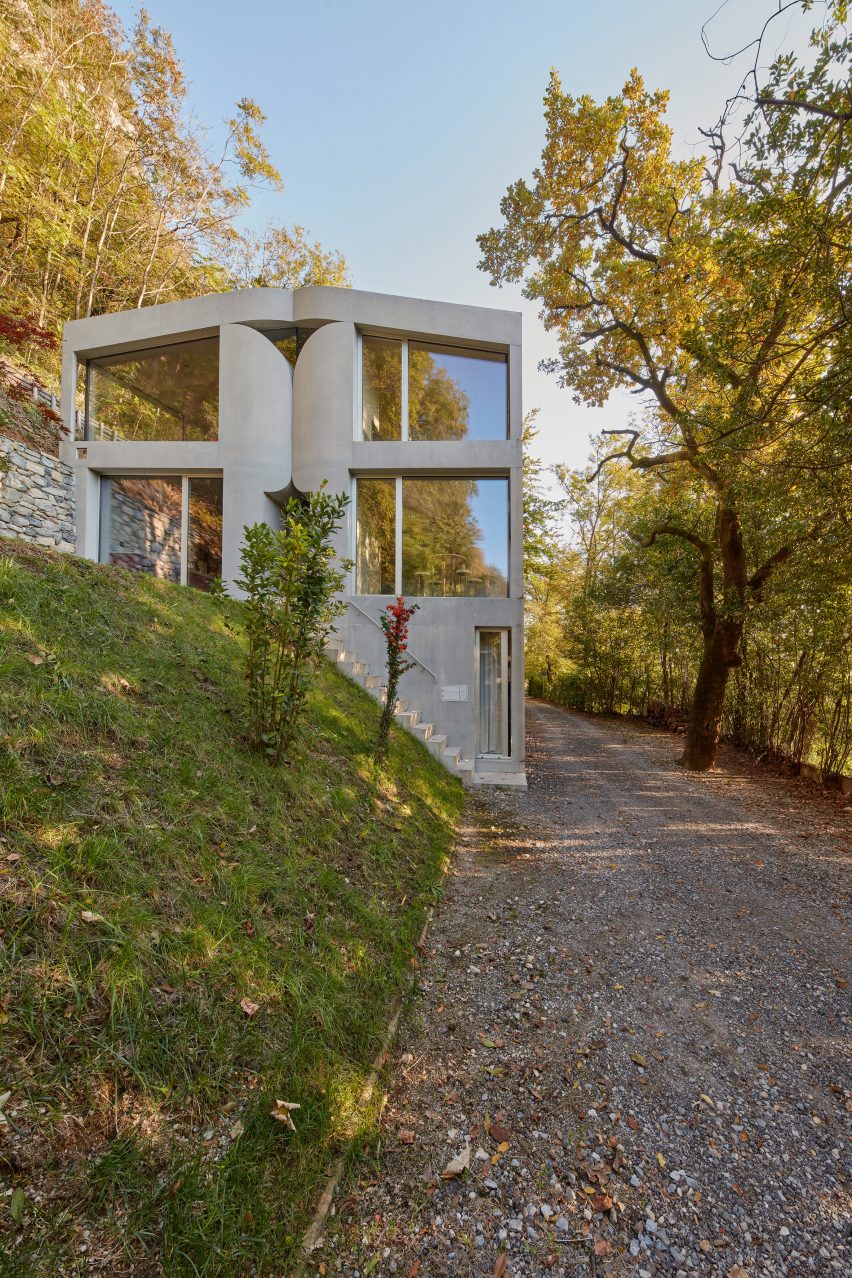

Referencing this history, the home was designed as what Celoria describes as a “massive primitive object embedded in the mountain”, centred around a large kitchen and dining room.
“This was the place where we used to go as children for lunch or dinner with friends or to sit in front of the fireplace and eat chestnuts,” Celoria told Dezeen.
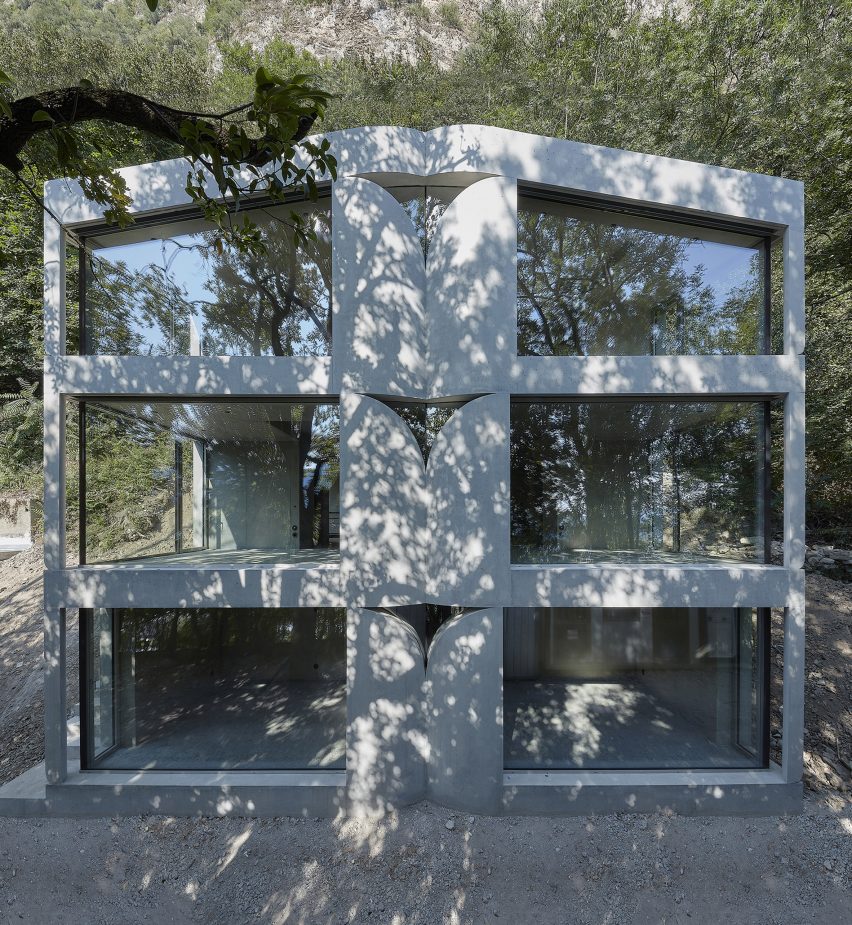

“The project arose with the idea of maintaining this spirit of conviviality and designing a house as if it were a grotto in relation to the surrounding nature,” he explained.
House C is organised around four concrete cores along the edges of its square plan, each finished with wave-like sections of concrete wall.
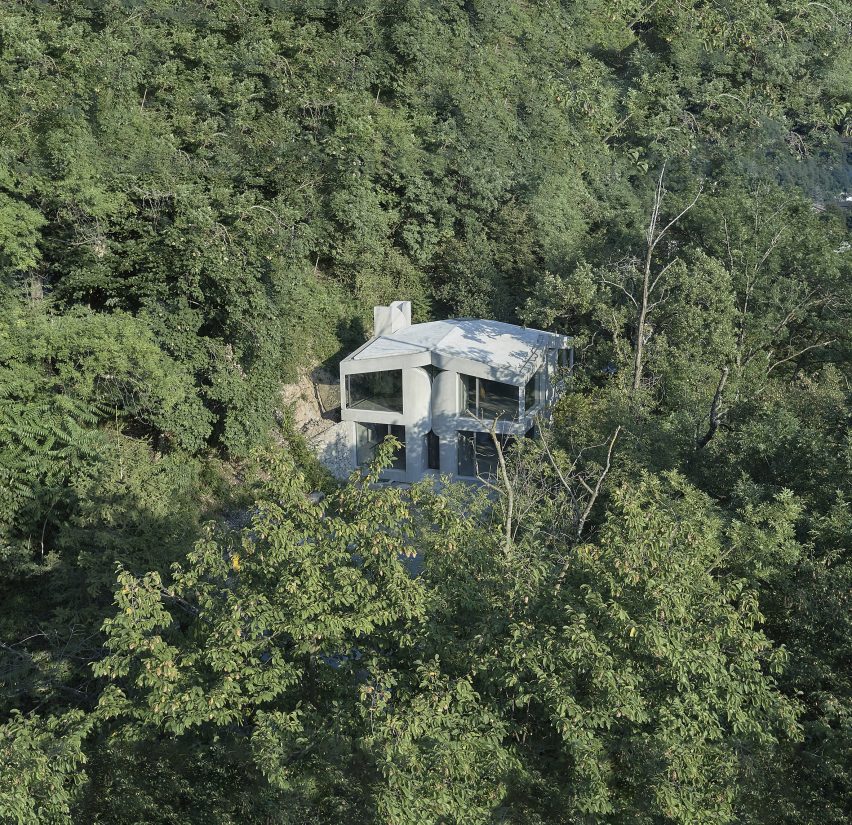

Acting as giant, hollowed-out columns, these concrete forms house the home’s infrastructure and utilities, including a spiral staircase, bathrooms, utility rooms and a fireplace.
This frees up the rest of the floor plates to be column-free, allowing for unobstructed views through the full-height windows and glazed corners that overlook the landscape.
“The elements bend inwards, containing the infrastructure of the house and designing the central square space of each floor, which increases in size towards the upper spaces,” explained Celoria.
“The structure is therefore the expression of the architectural body, conceived to promote a close dialogue between interior and exterior and between architecture and landscape,” he added.
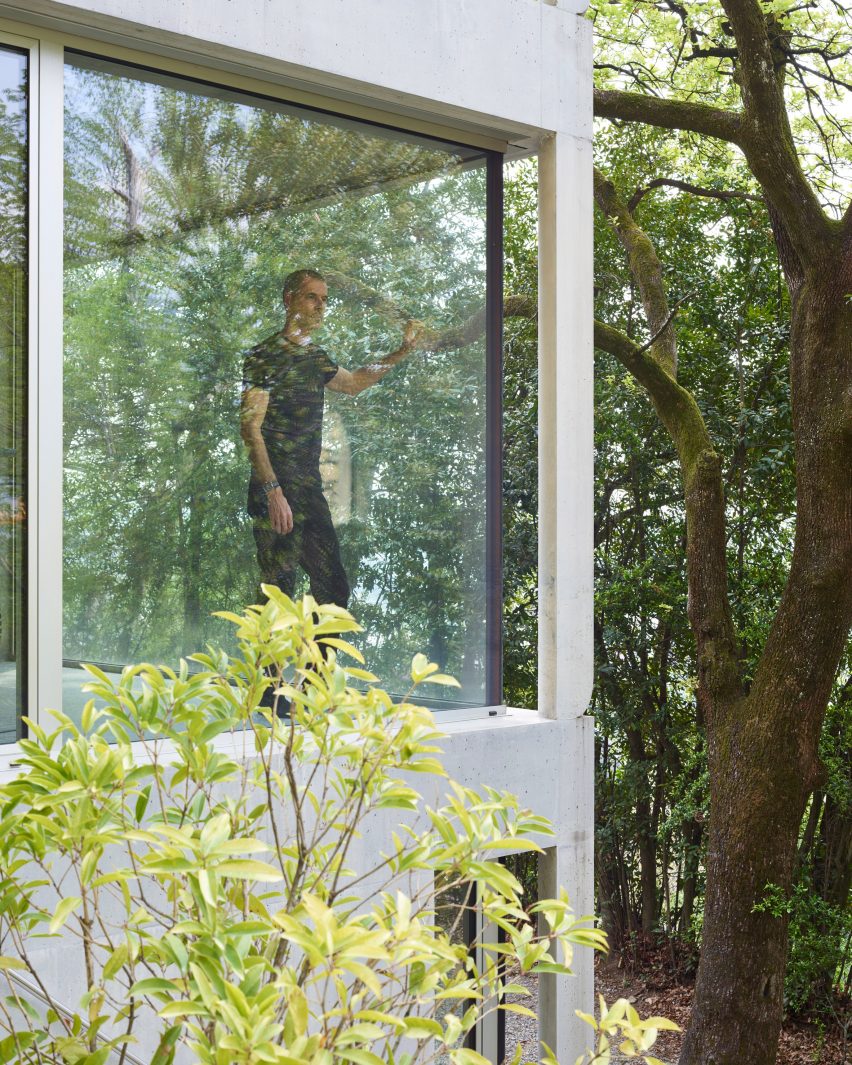

The bedrooms take advantage of the partially subterranean ground floor to provide greater privacy, with the living, dining and kitchen floor above constituting the main entrance to the home.
On the home’s second floor, a single multipurpose space sits beneath a diamond-shaped skylight in the home’s roof and surrounded by fully-glazed walls.
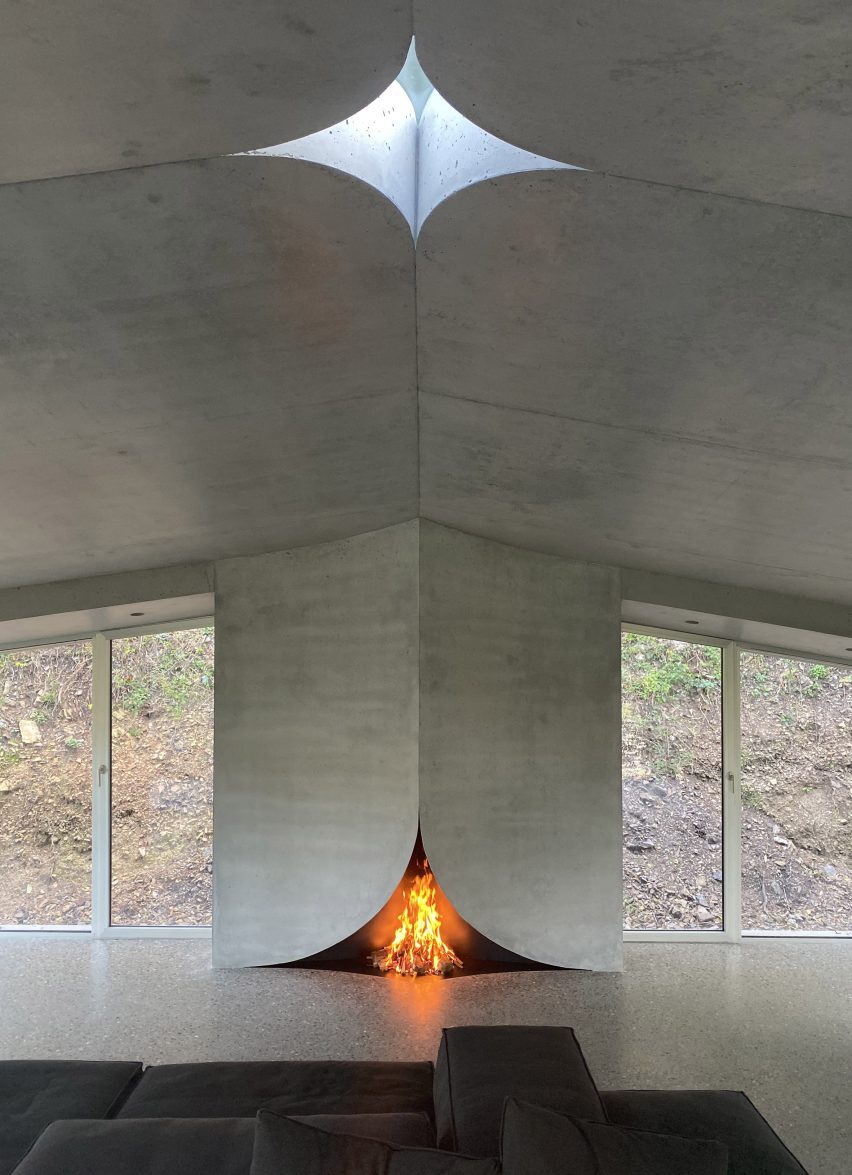

Celoria Architects kept the monolithic concrete form as visible as possible on the interiors, with wood used for the doors, staircase and kitchen counters and a fir dining table in reference to the old table the family used for dinners on the site.
“It was important to work with only one material and to express an atmosphere that was monolithic and monochromatic,” Celoria told Dezeen.
Elsewhere in Switzerland, architecture studio PPAA recently completed a concrete villa overlooking Lake Zurich and Atelier Rampazzi created a trio of concrete houses with warm timber panelling.

